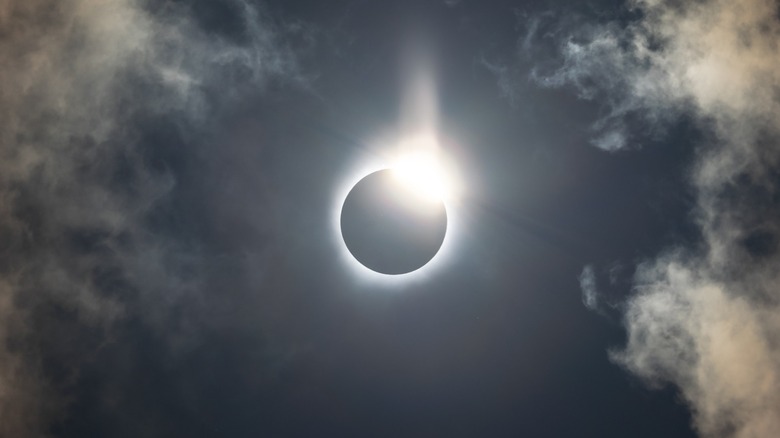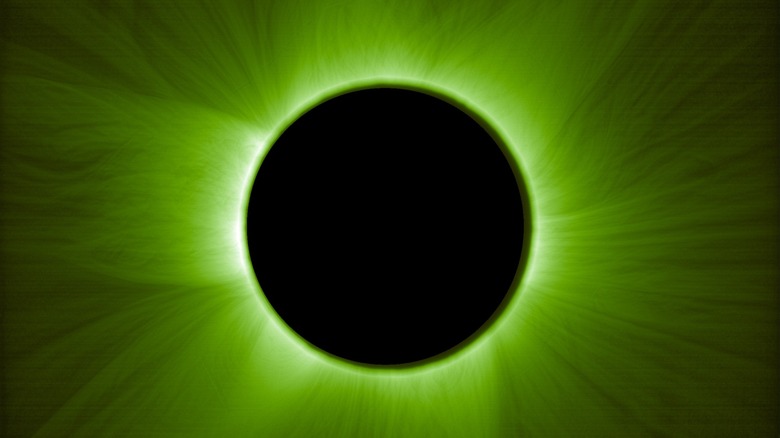We Can Now Create A Man-Made 'Eclipse' – Here's Why That Is So Important
Just as NASA has its own satellites and telescopes floating around in space, so does the European Space Agency (ESA). ESA's Gaia Observatory, for instance, mapped nearly two billion celestial objects and could even measure "starquakes" before its recent retirement. In 2024, the ESA added to its roster of orbiting spacecraft when it successfully launched Proba-3, the first-ever mission by any space agency to test precision formation between two separate objects. As if successfully launching one satellite into space and making sure it goes exactly where it's supposed to isn't difficult enough, precision formation requires positioning and controlling two separate spacecraft as they fly together as a single unit.
The two satellites that make up the Proba-3 mission are called the Coronagraph and the Occulter. Months after their launch, the ESA completed its first successful test, flying both objects 150 meters (492 feet) apart in formation — an engineering feat never before accomplished. Not only is the mission's success promising for astronavigational technologies, but the formation of the two satellites also serves another intriguing scientific purpose: creating artificial solar eclipses that mimic the ones occasionally seen on Earth, giving scientists a particular view of the sun for study.
The Coronagraph is designed to take images of the sun's corona, which is the outermost layer of our nearest star. The Occulter carries a round disk that's a little over four-and-a-half feet in diameter (1.4 meters). By floating in precise formation with the Coronagraph, the Occulter's disk blocks the sun and creates an 8-cm (3.1 inches) round shadow on the former's optical instrument — just as the moon casts a shadow over Earth during a solar eclipse.
How does a solar eclipse work?
An eclipse describes any time light is blocked from one celestial object passing another. On Earth, a solar eclipse occurs when our orbiting moon passes in front of the sun, blocking its light from the ground. Because of its distance from Earth — in what amounts to a huge coincidence — the moon appears in the sky as almost the exact same size as the sun. The sun is around both 400 times bigger and 400 times farther away than the moon.
When there's a total solar eclipse, the moon almost fully blocks the sun as the disks we see in the sky perfectly align. If you were to orbit our planet at that moment, you'd see a 300-mile wide shadow cast onto the surface. Because everything has to match up precisely, total solar eclipses only occur once or twice a year, visible along a limited path across the Earth. The next total eclipse won't occur over the United States until 2044, which is why you really shouldn't have missed the last one.
One of the many cool things about a total eclipse is that, when the moon blocks the sun, astronomers can observe the corona, which is typically too faint to see amidst the intensely bright light of the sun. Even viewers on the ground can see it with the naked eye — it's the disk of flickering, wispy light encircling the black circle of the moon during totality. What you're actually seeing are giant streams of plasma ejected constantly from the sun. You're only able to see the corona for minutes before the moon (which is always moving) once again reveals the sun (which you should never look at directly).
What have scientists learned from Proba-3?
With the ability to keep the Coronagraph in precise formation with the Occulter, the man-made eclipses of Proba-3 allow astronomers to observe the corona not just for mere moments, but for six hours at a time. Plus, the orbit of the two satellites, which fly in a fixed configuration, can create an artificial solar eclipse every 19.6 hours — giving scientists many more chances to study the corona than you get from the much rarer natural eclipses.
With hours to observe the corona rather than seconds, the Chronograph can take much longer exposures with its solar images, and anyone learning how to photograph a total solar eclipse likely knows the importance of longer exposures. They provide much greater detail for scientists to study, which can have real-world benefits. Images of the corona can teach scientists more about solar wind and coronal mass ejections (CMEs). These eruptions of intense solar particles can create auroras on Earth, but if strong enough, can also inflict devastating damage to electronics, including vital communication, navigation, and energy infrastructure. For our own safety, the more we know about CMEs, the better.


